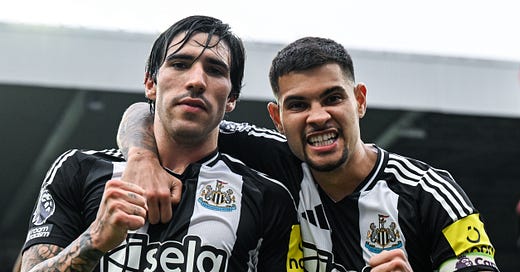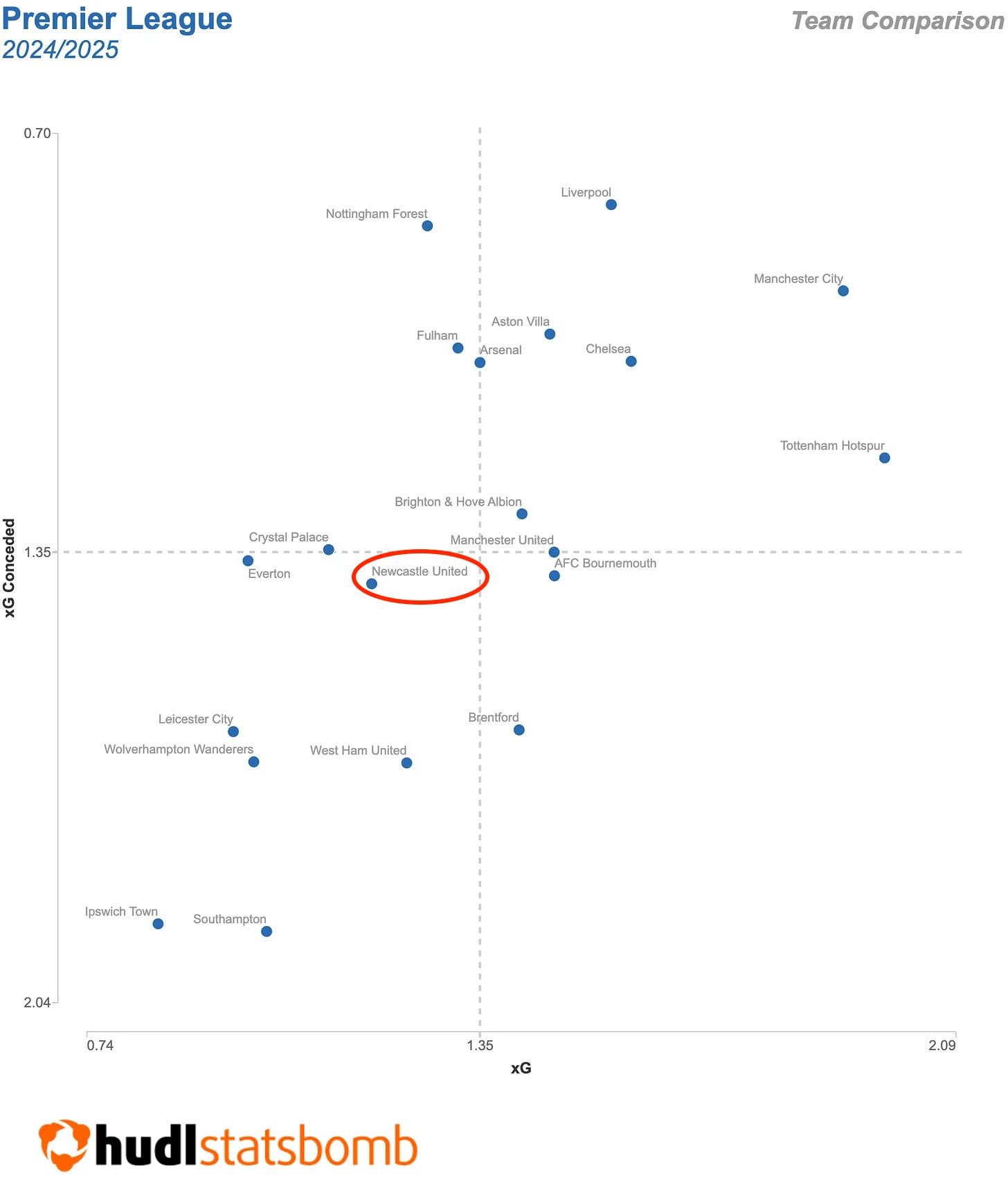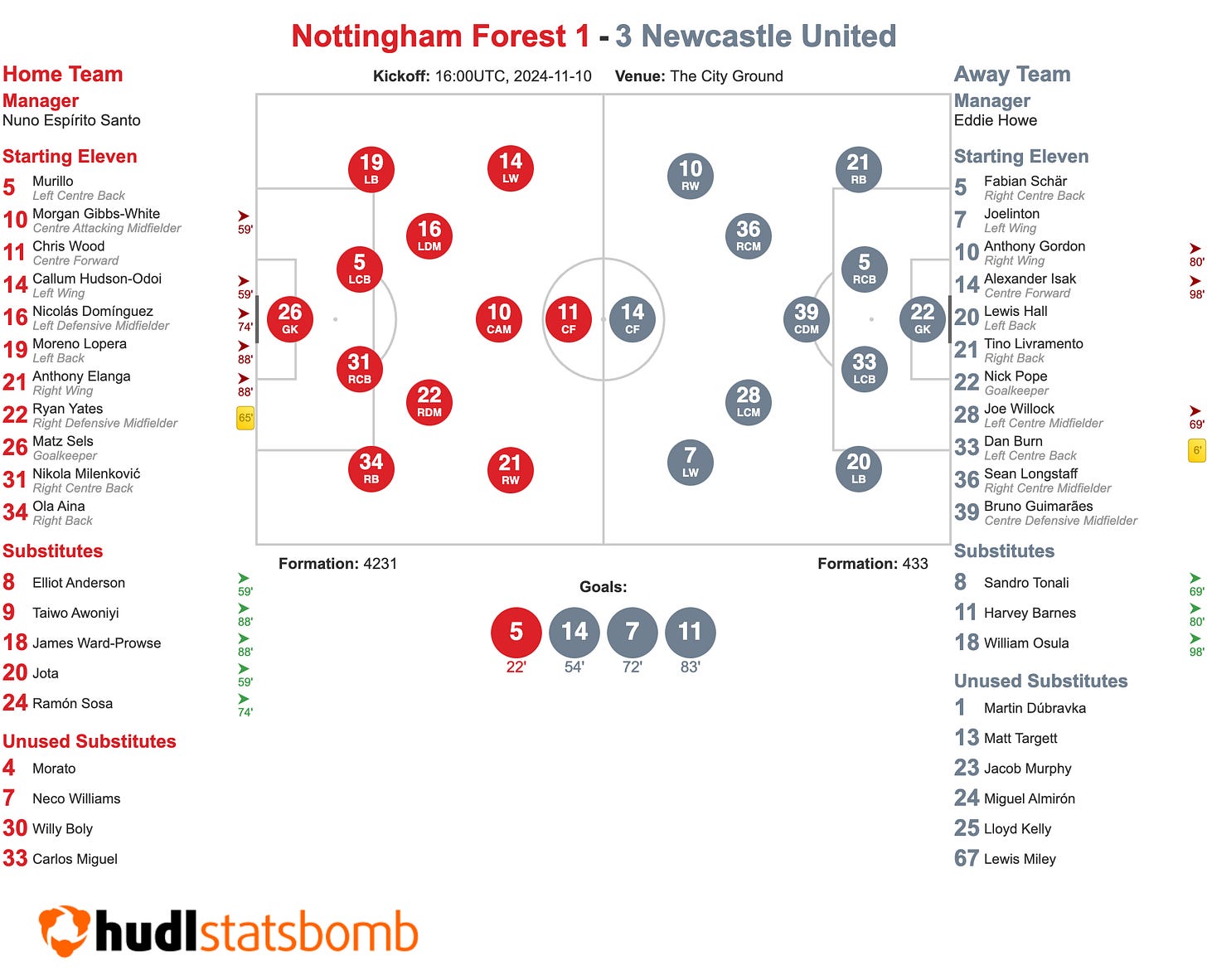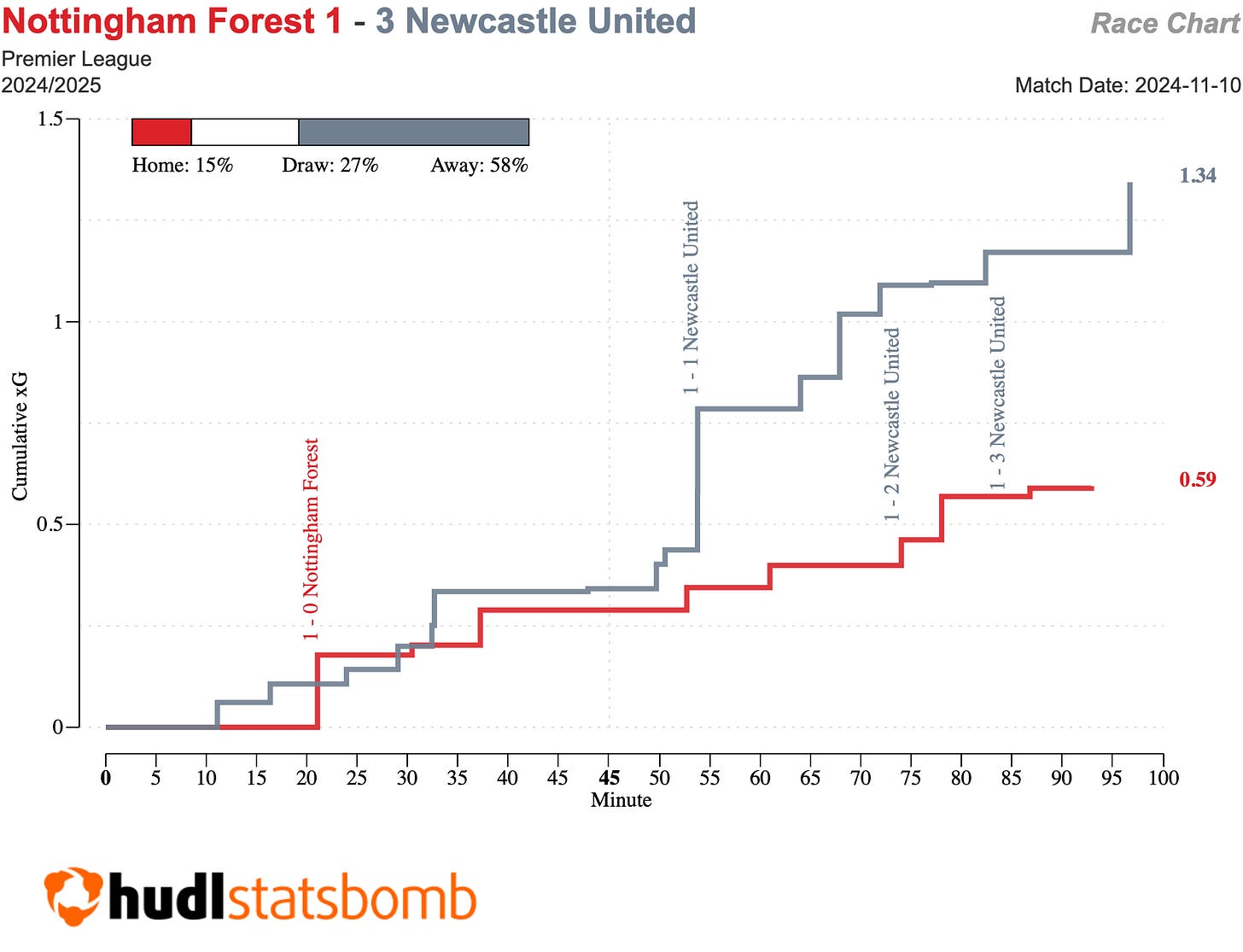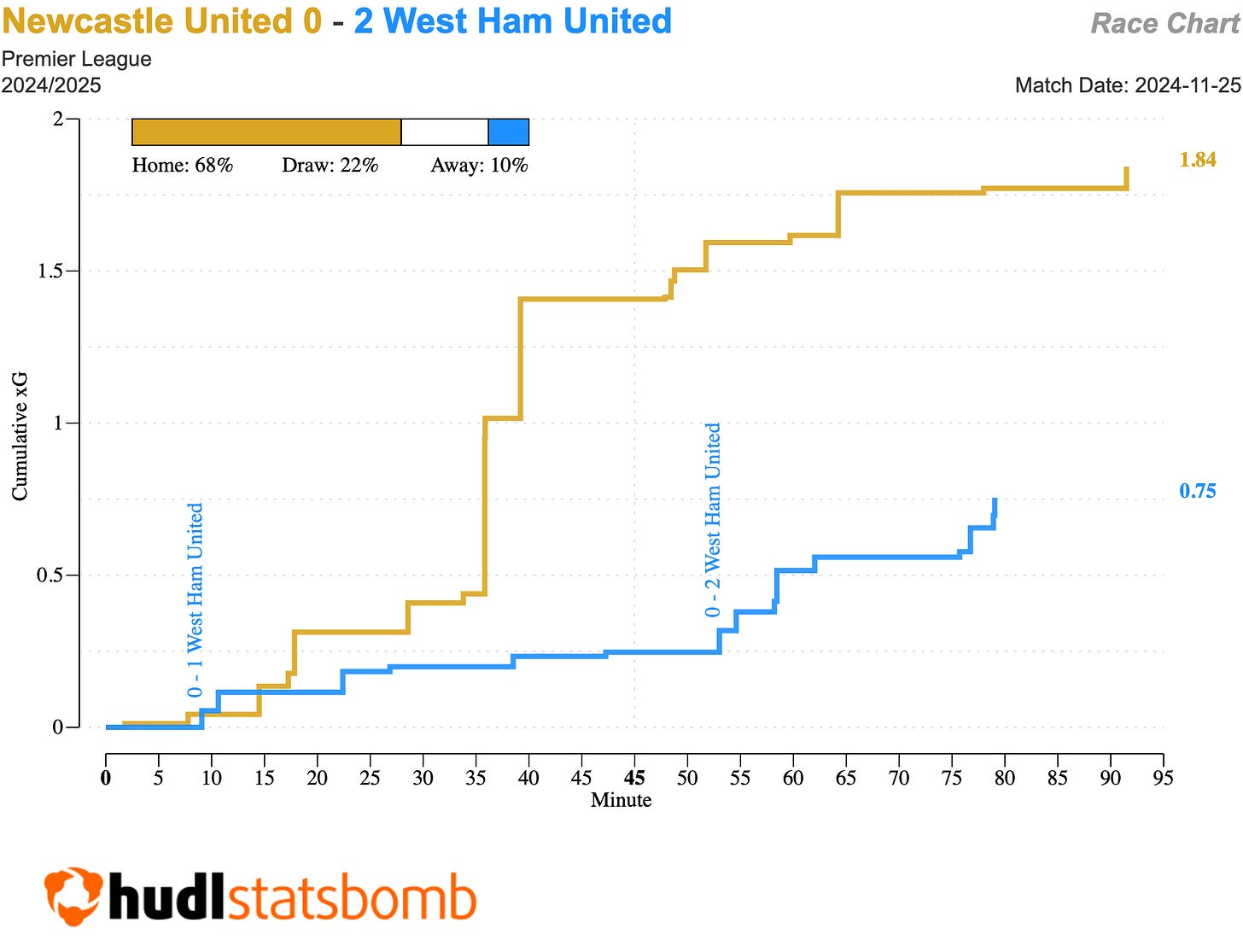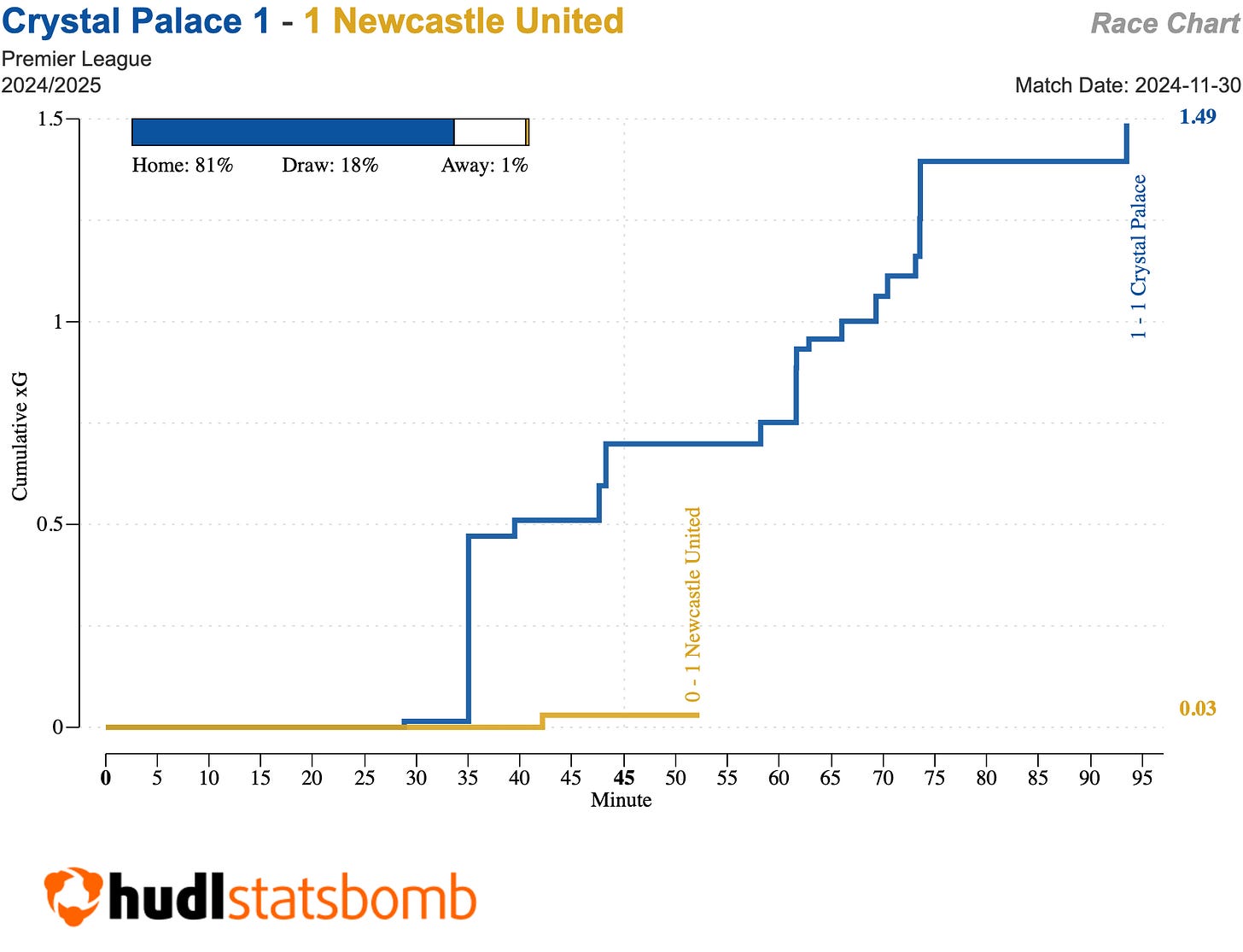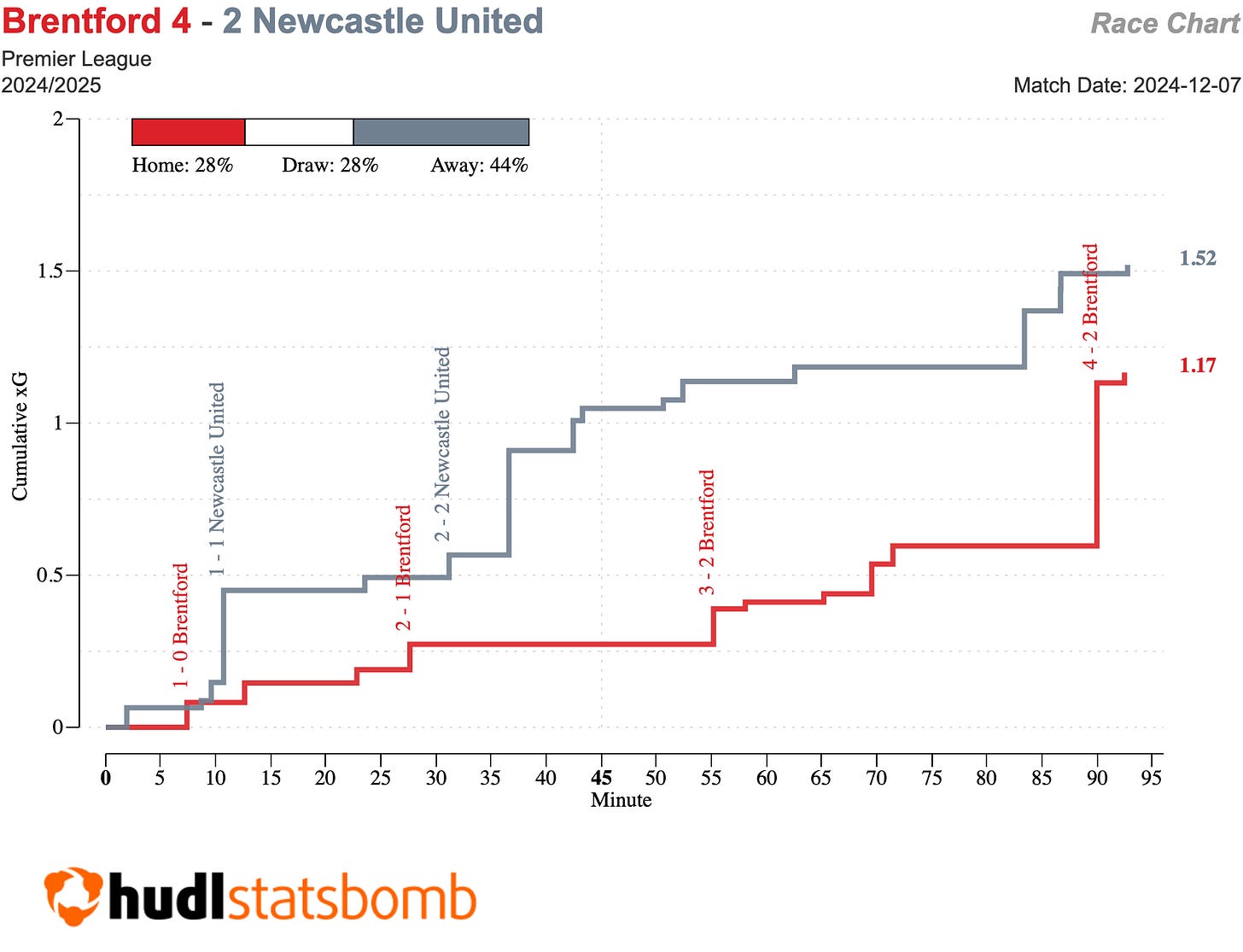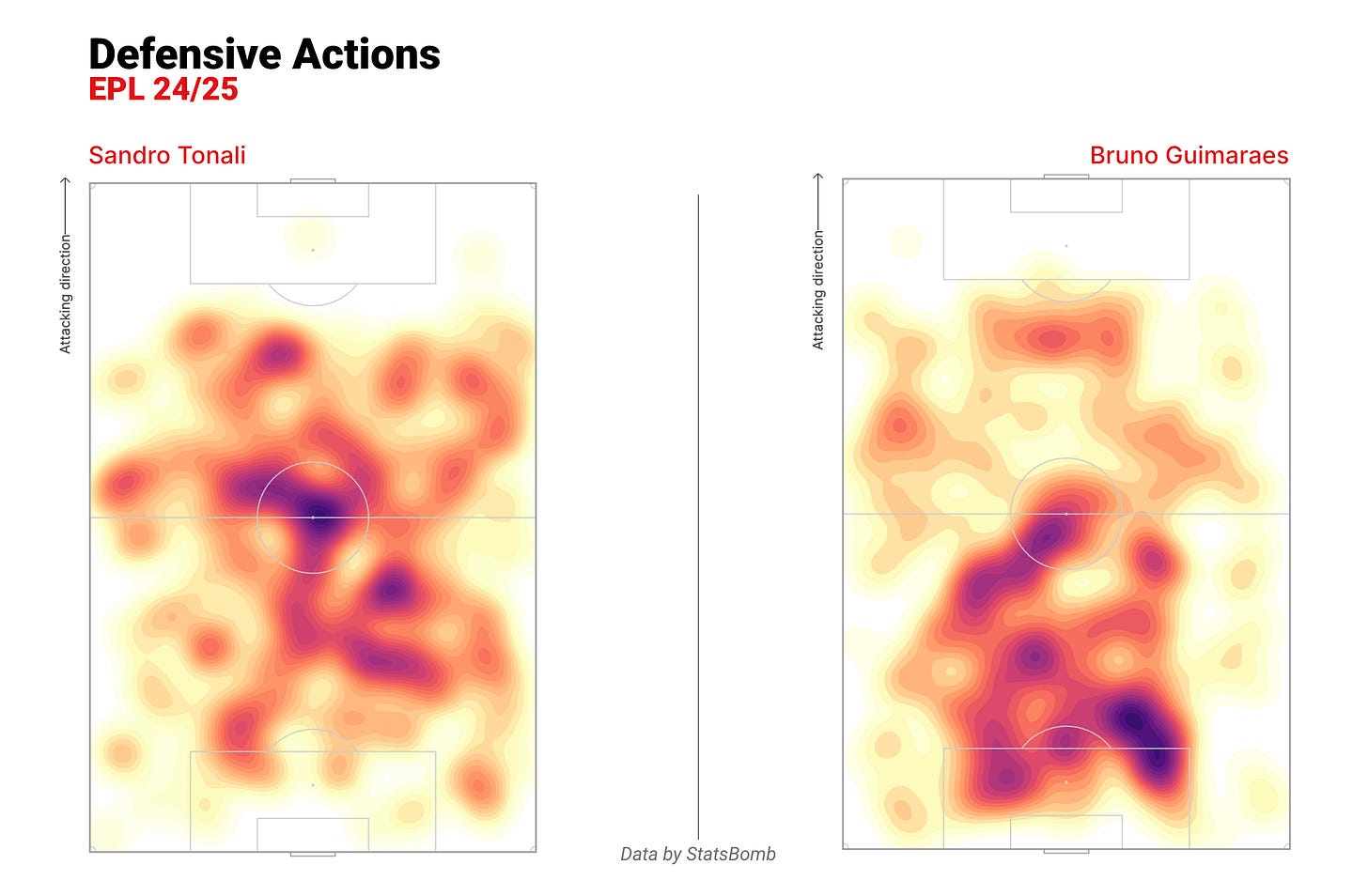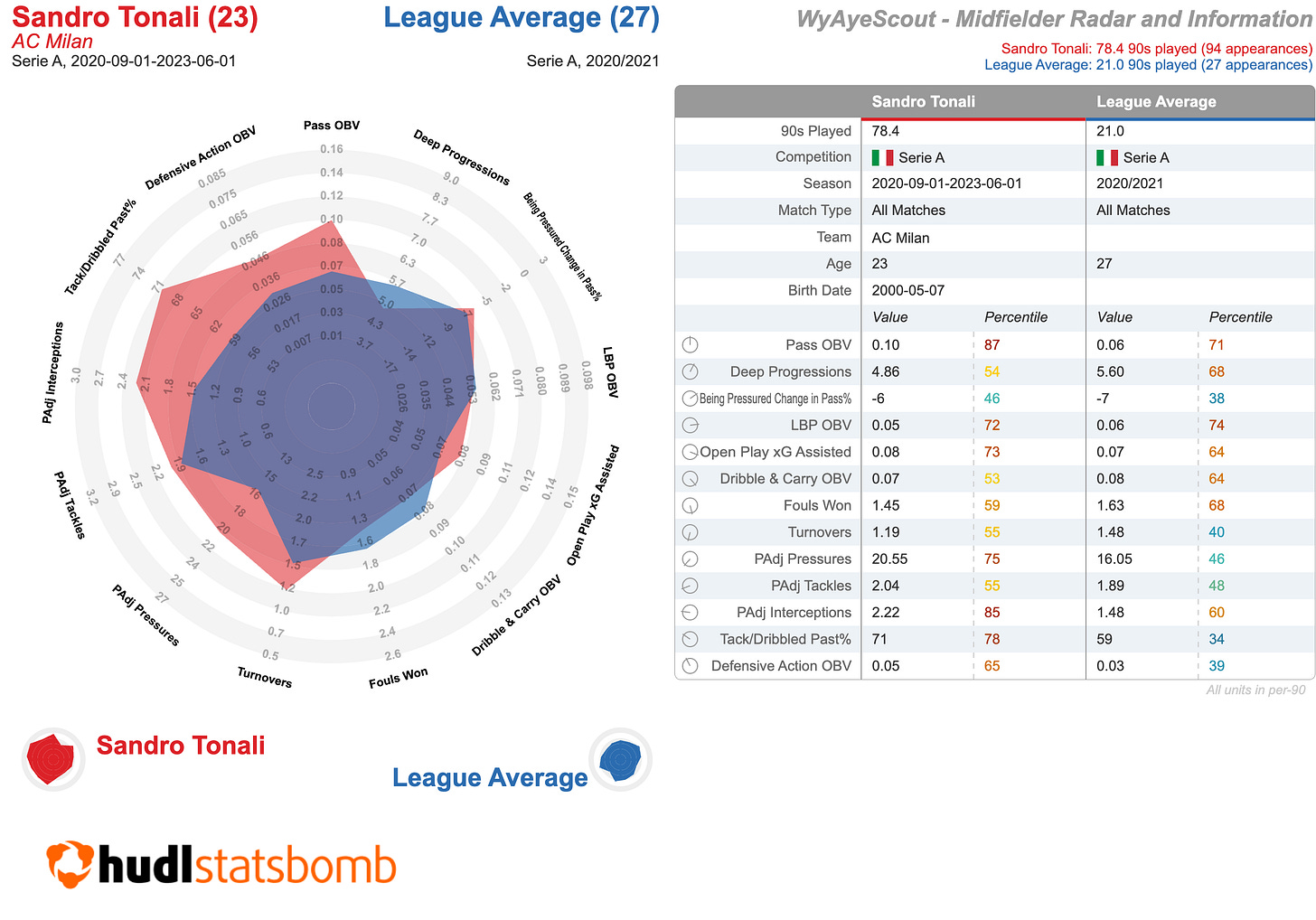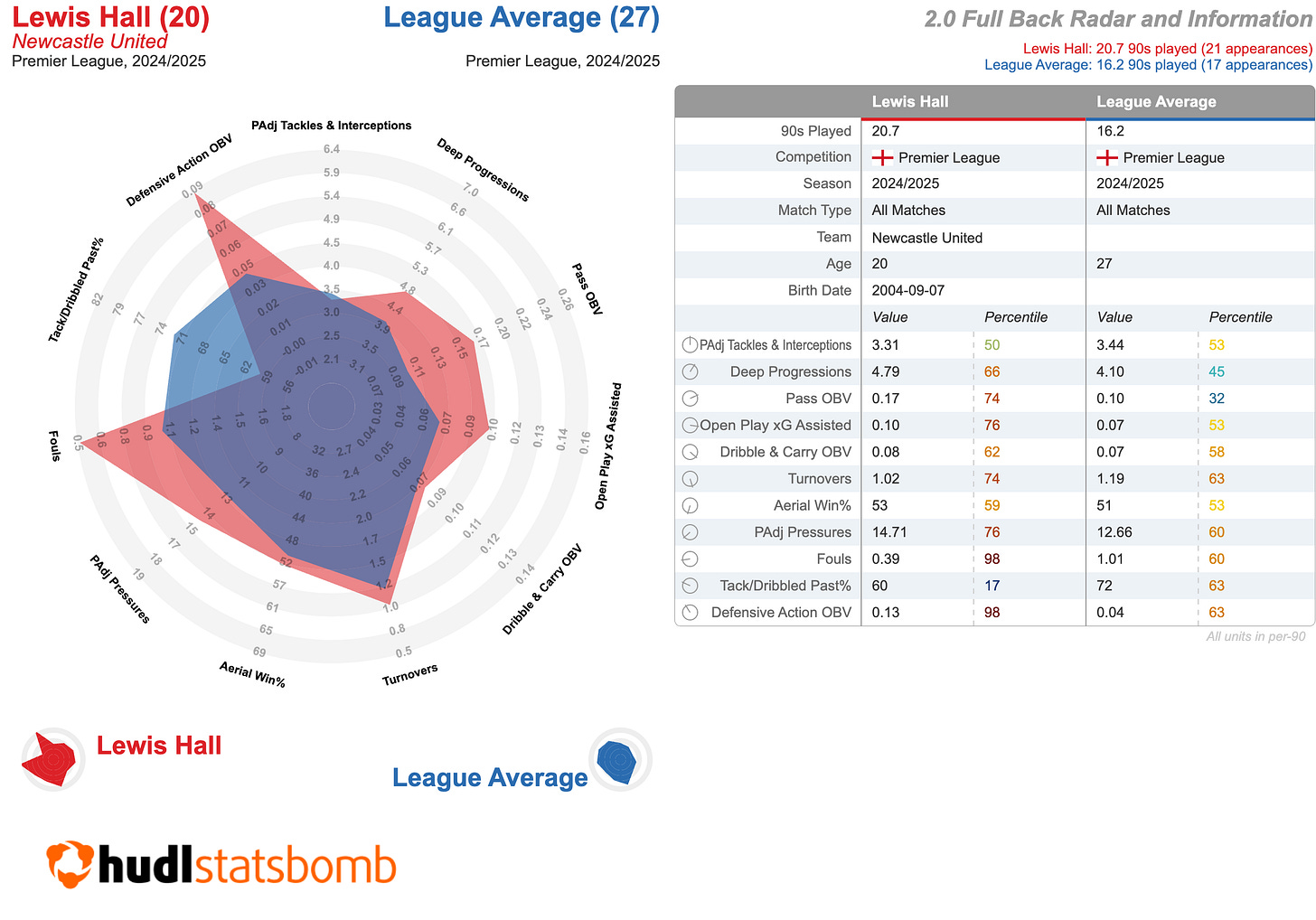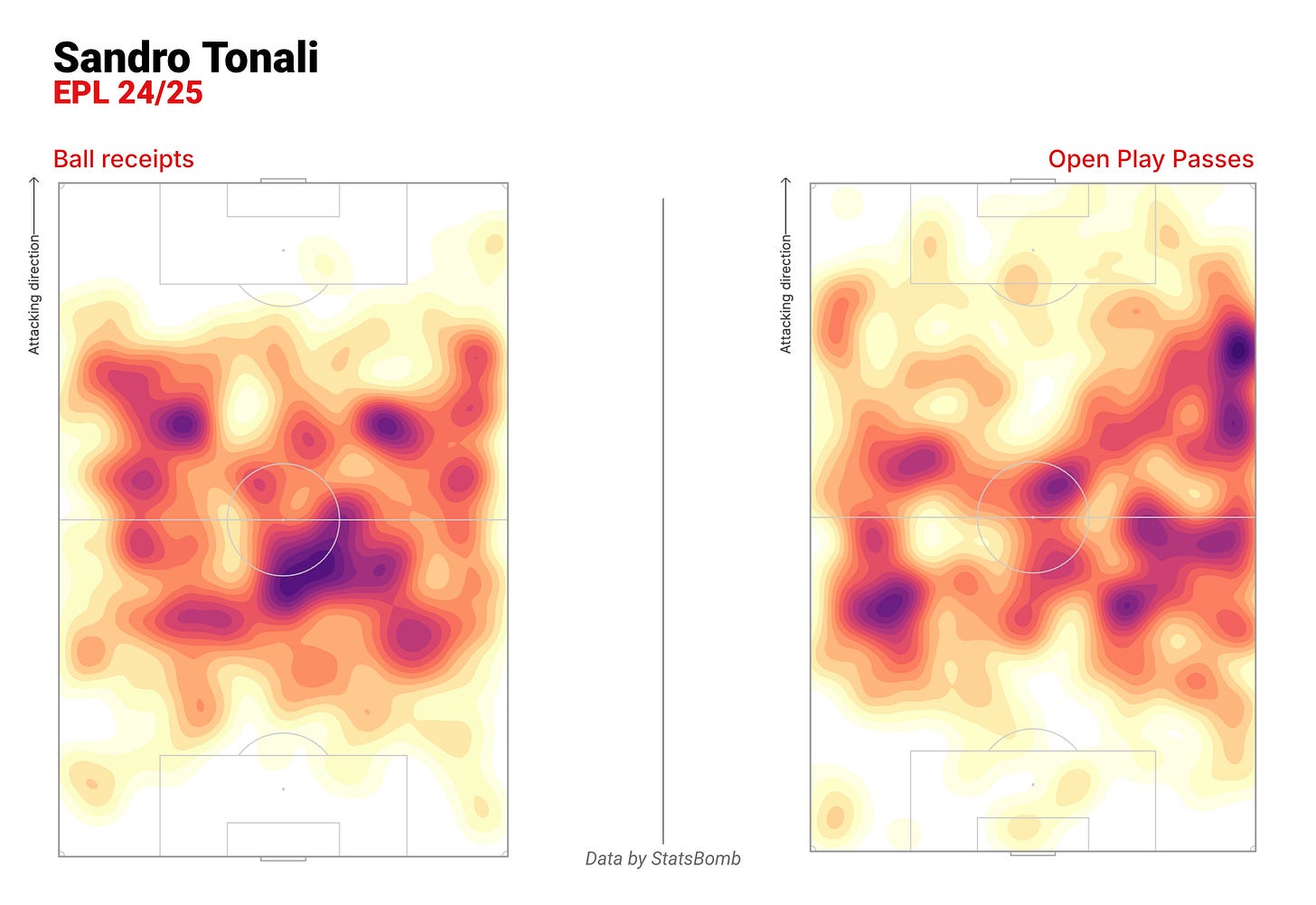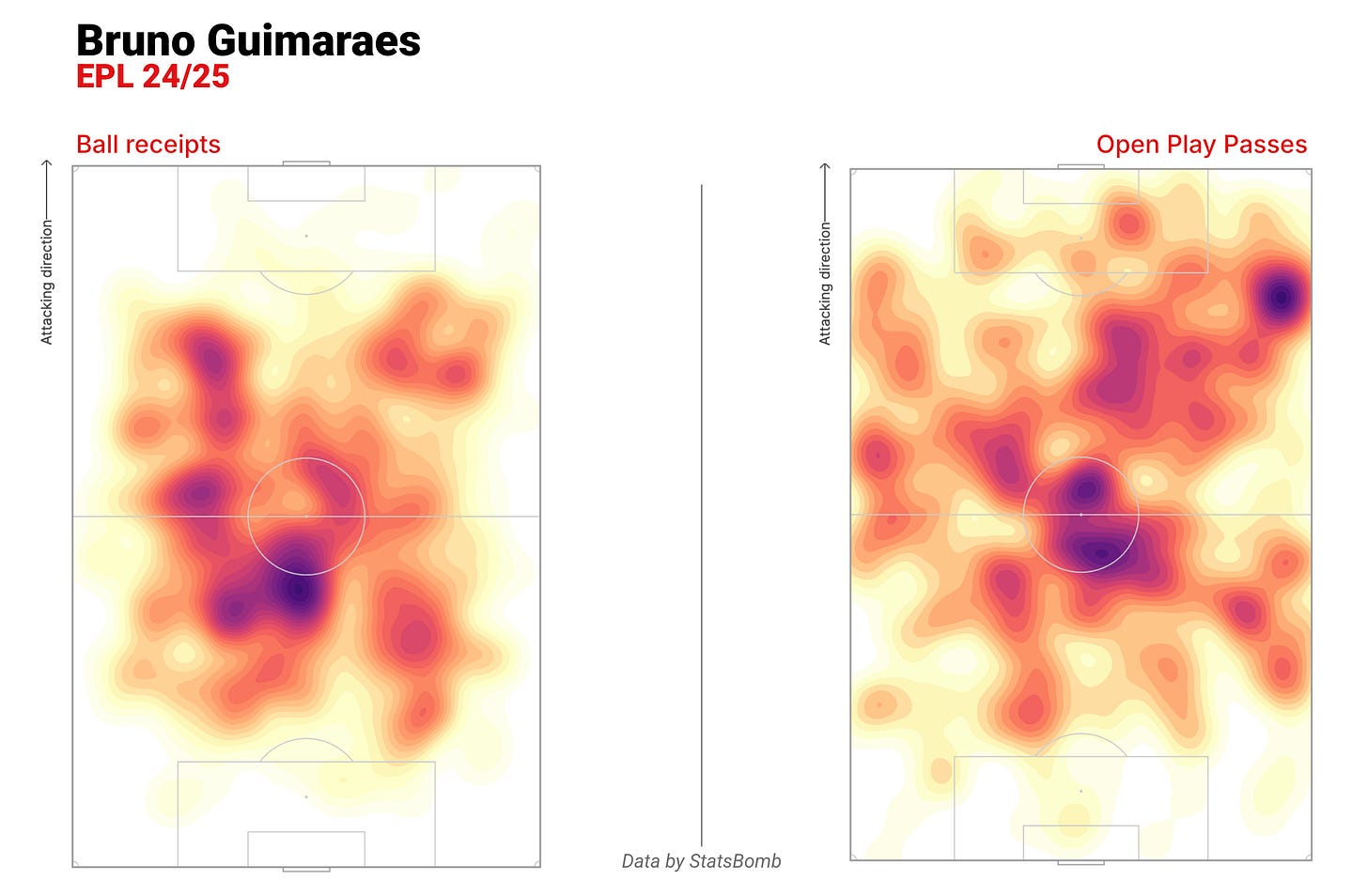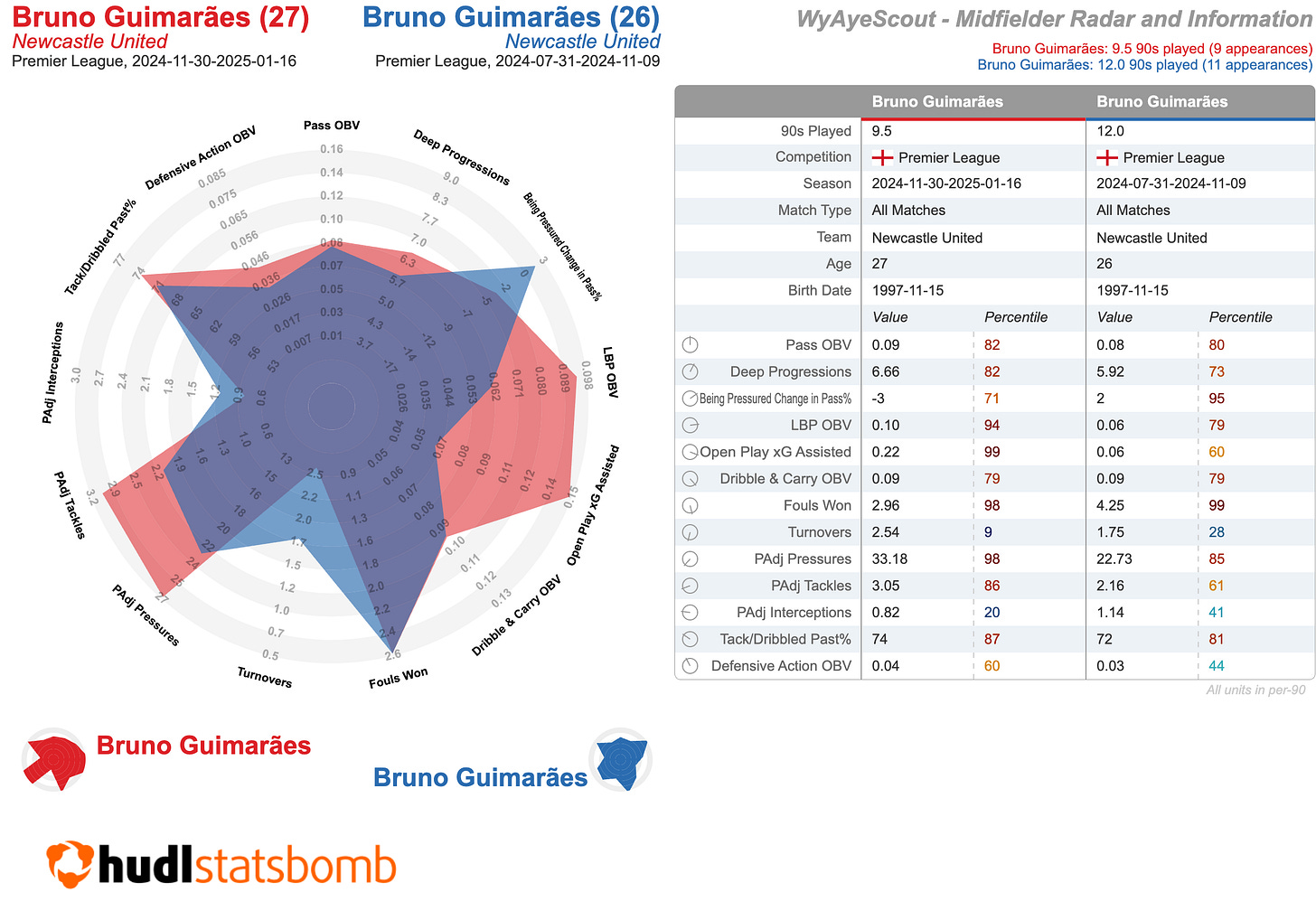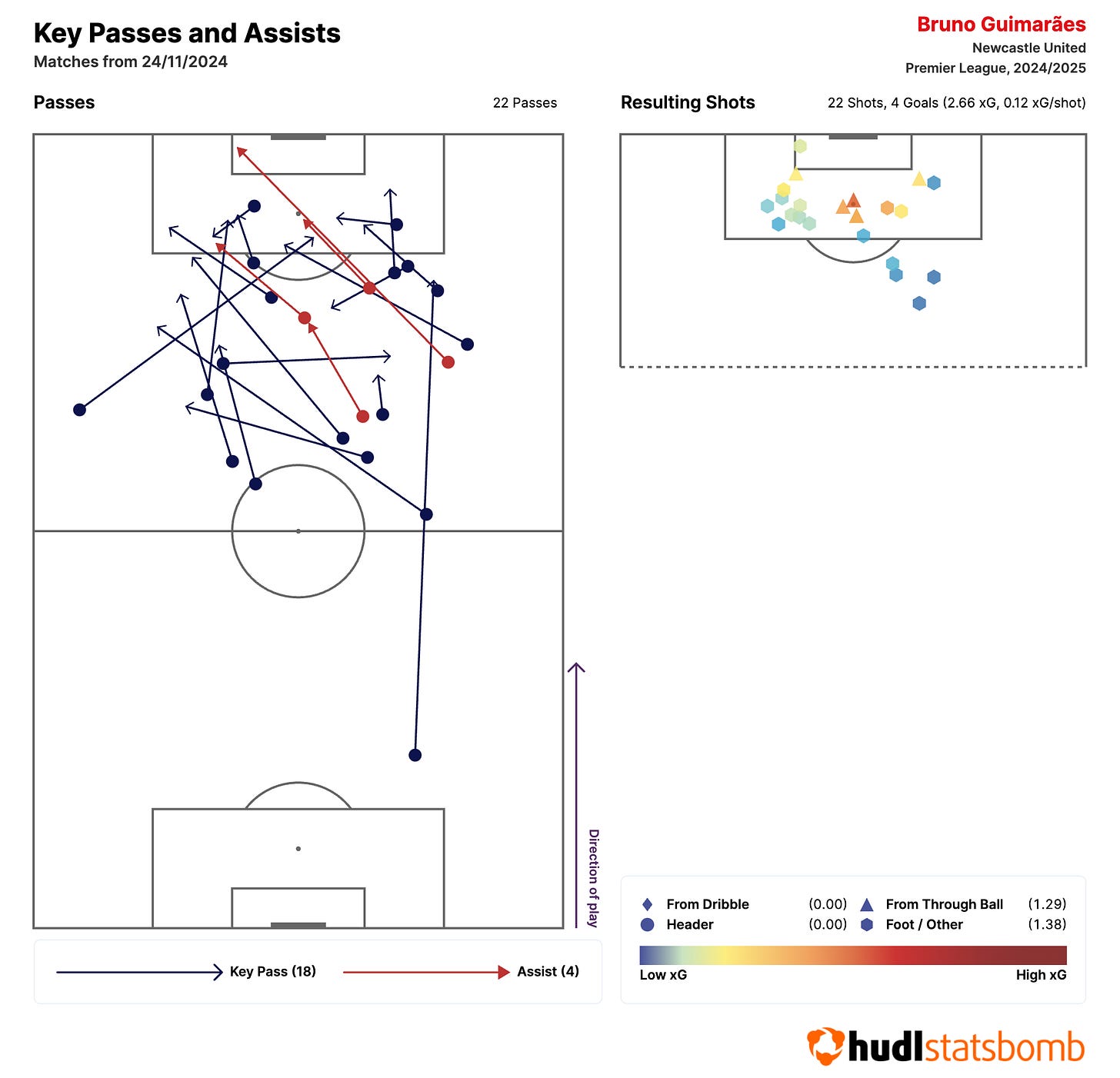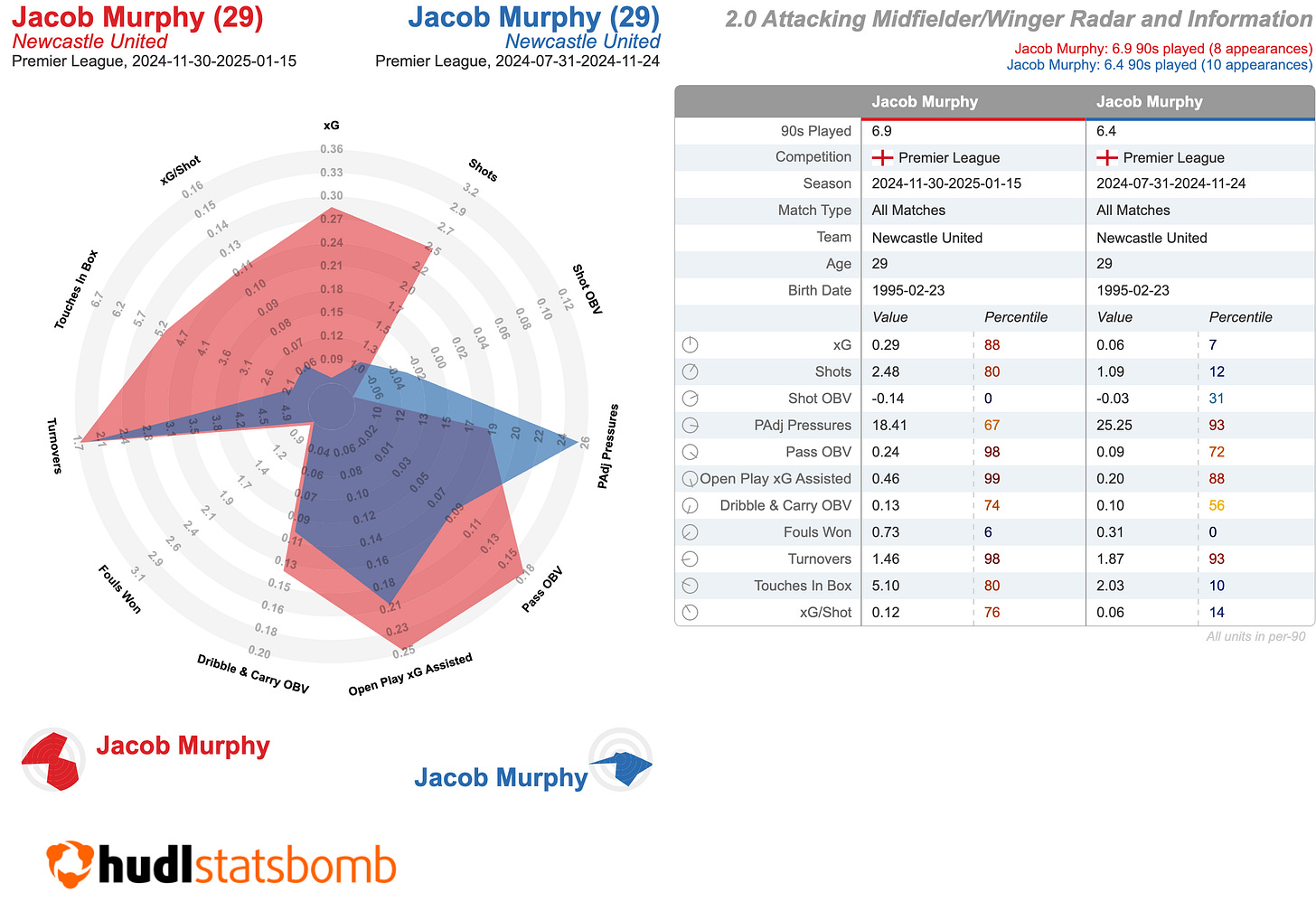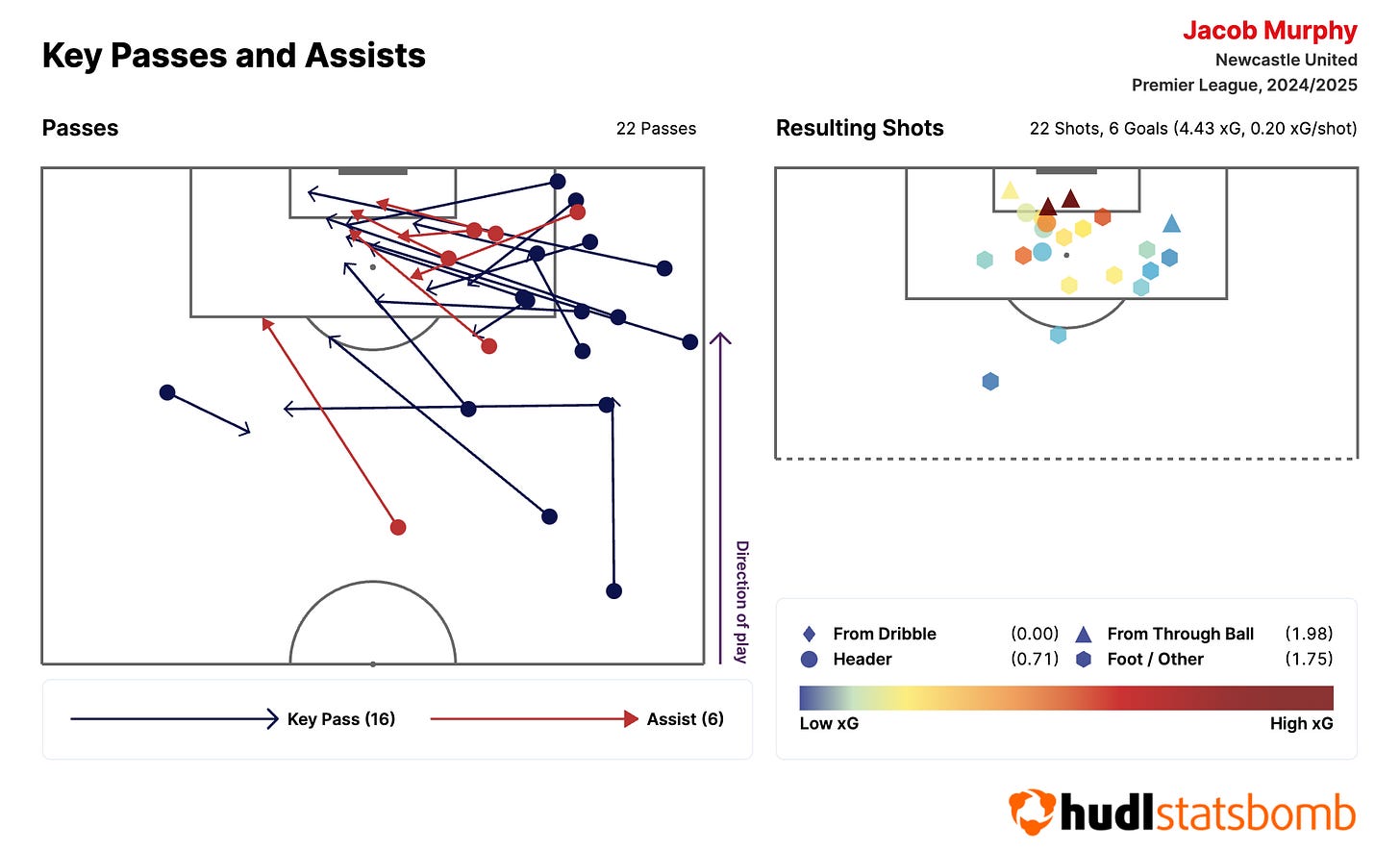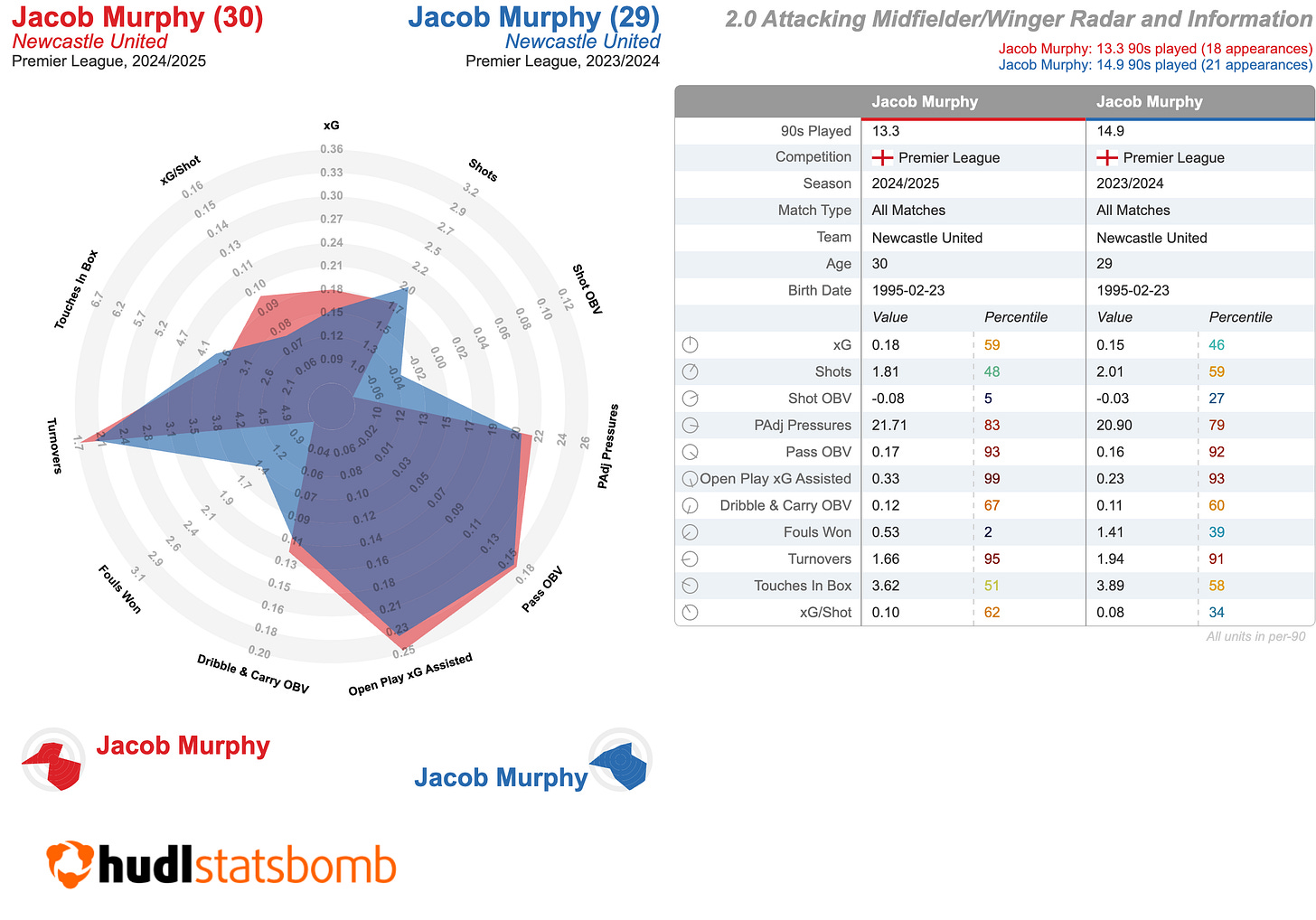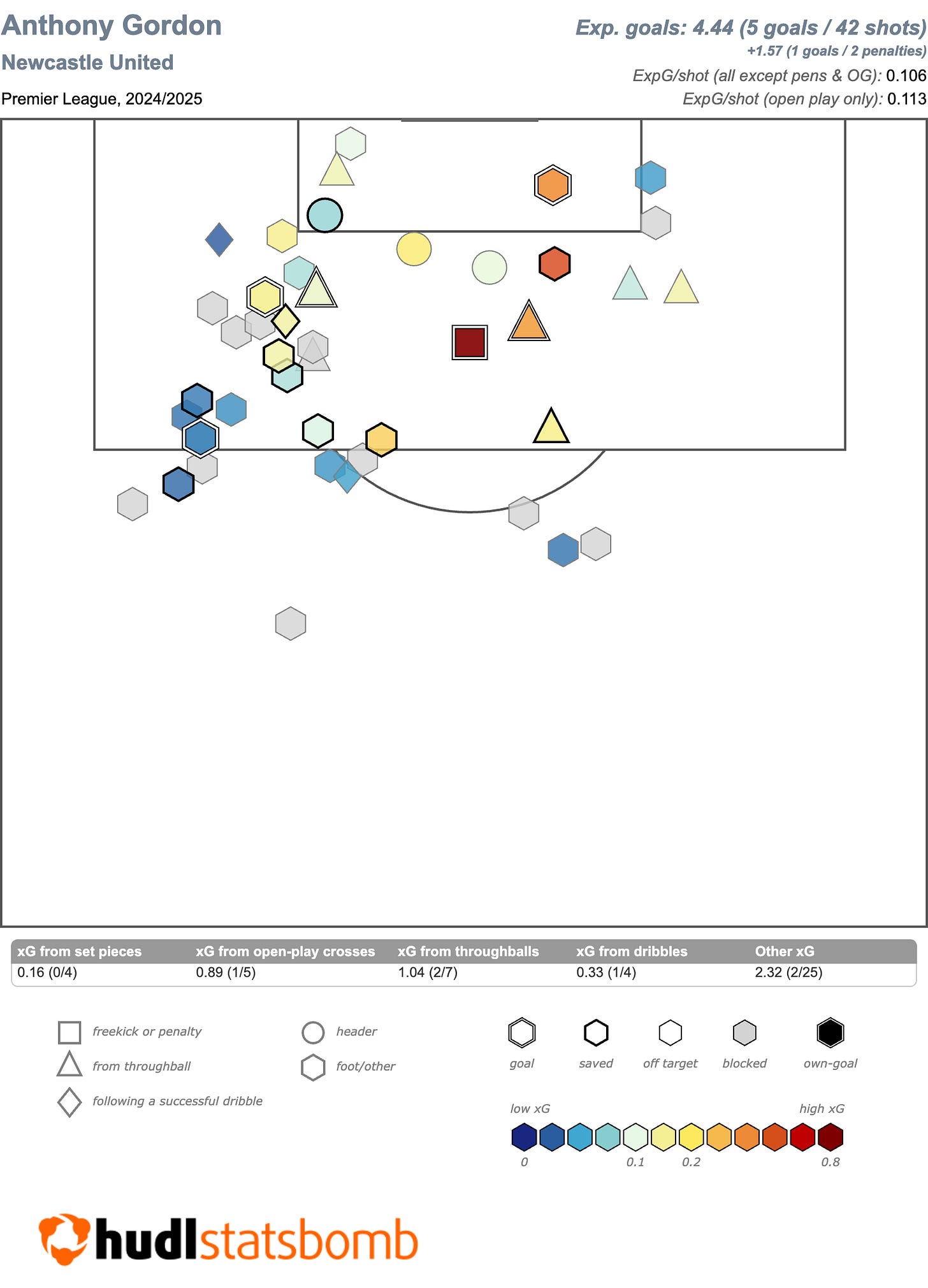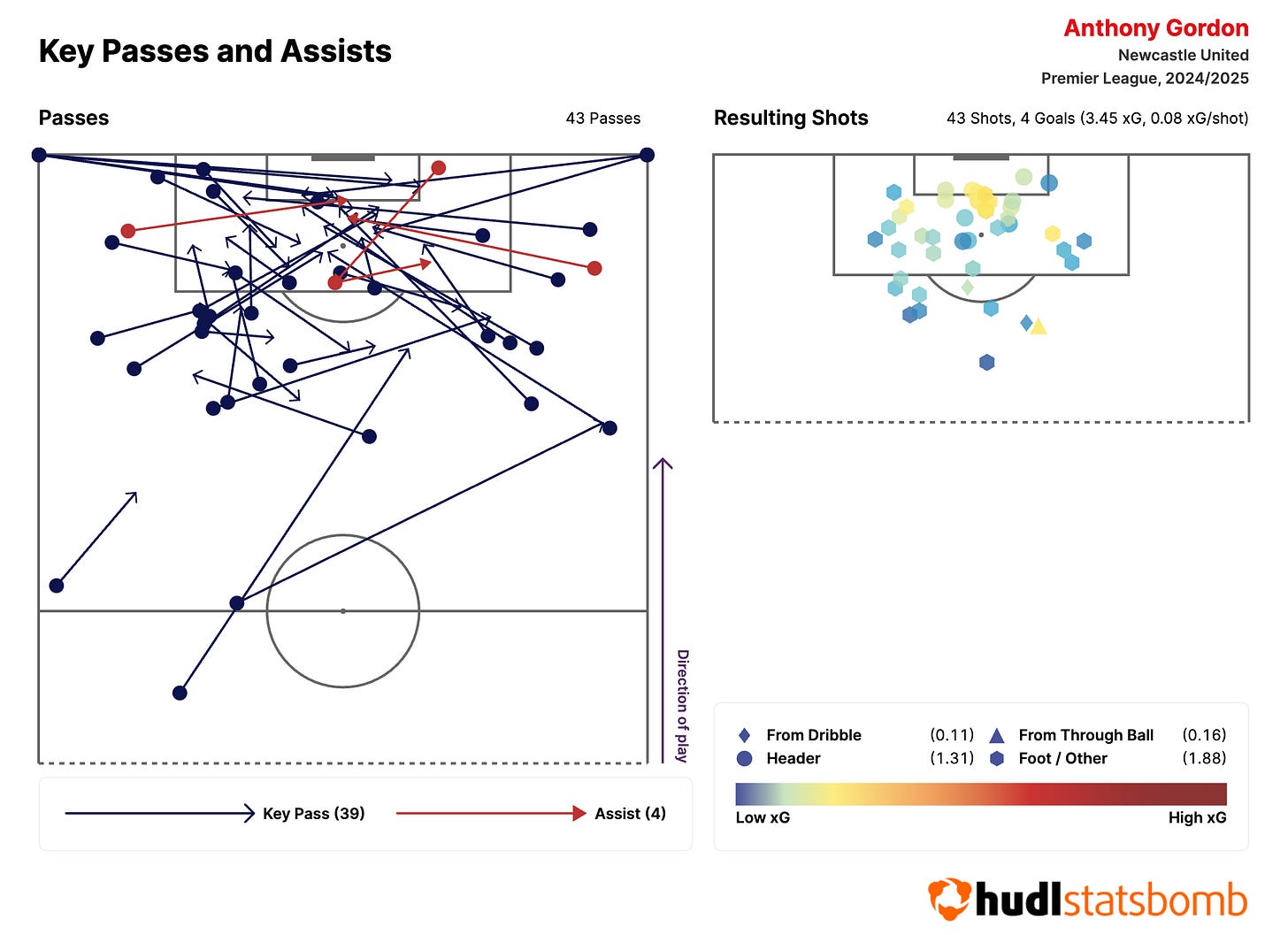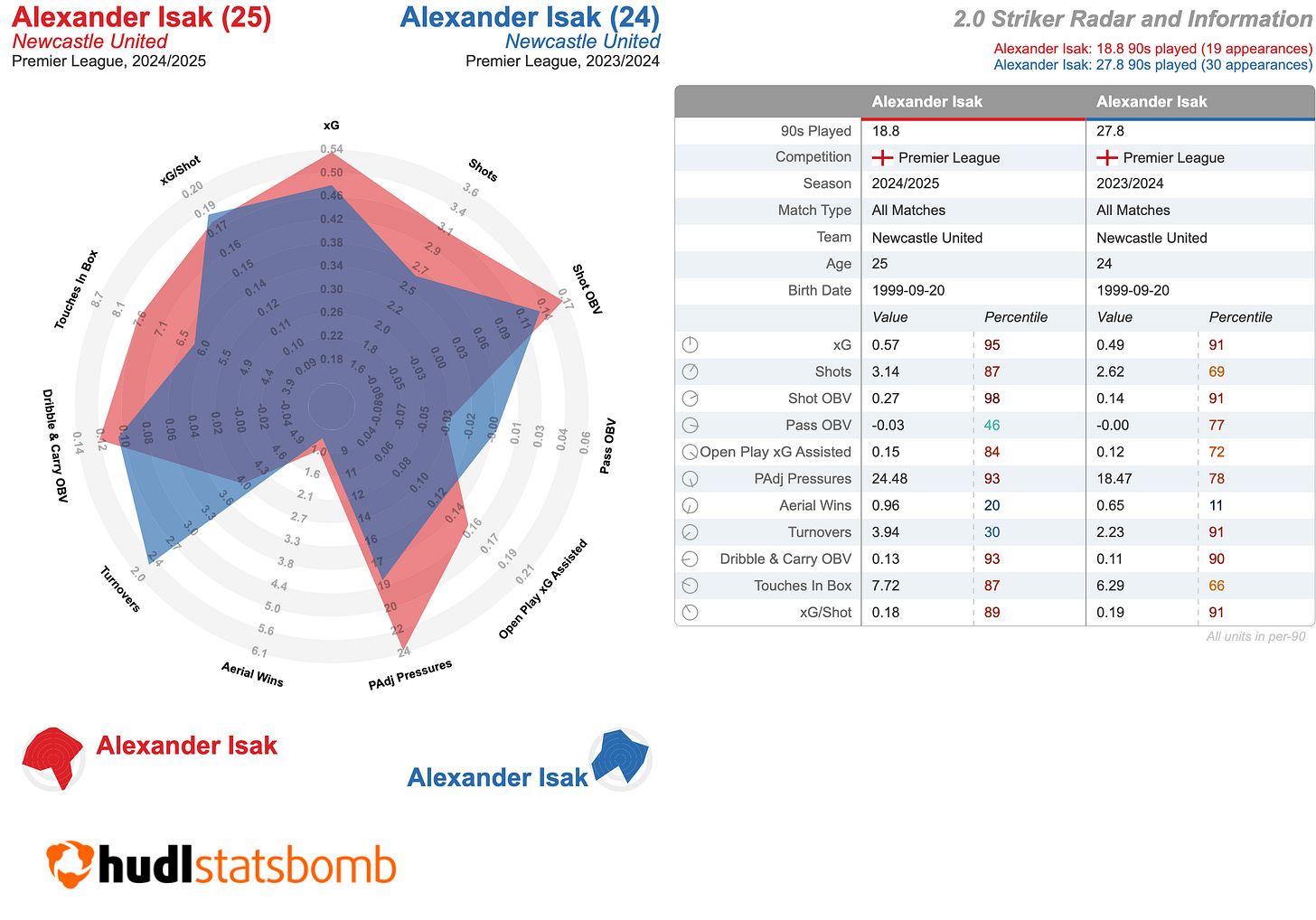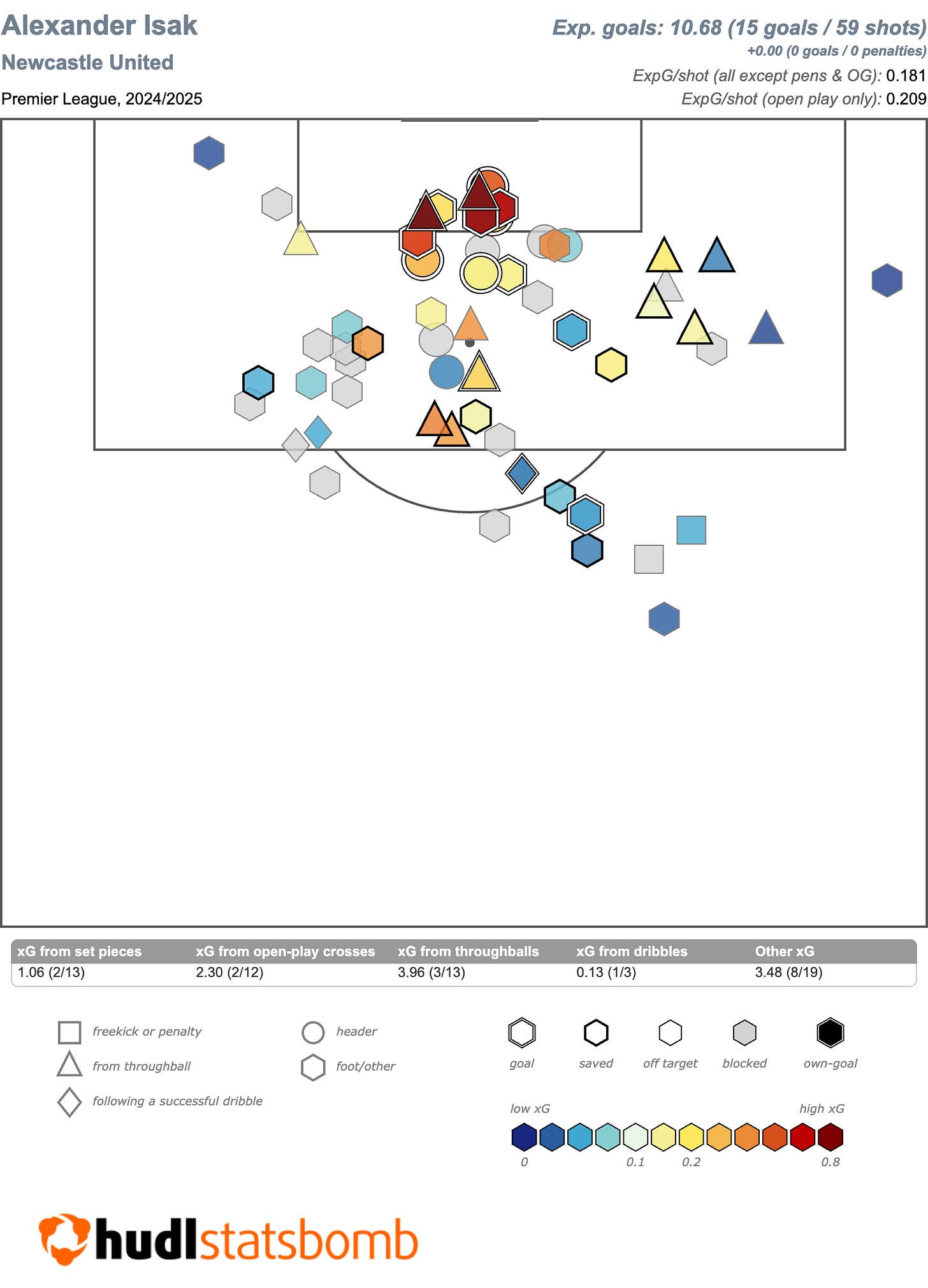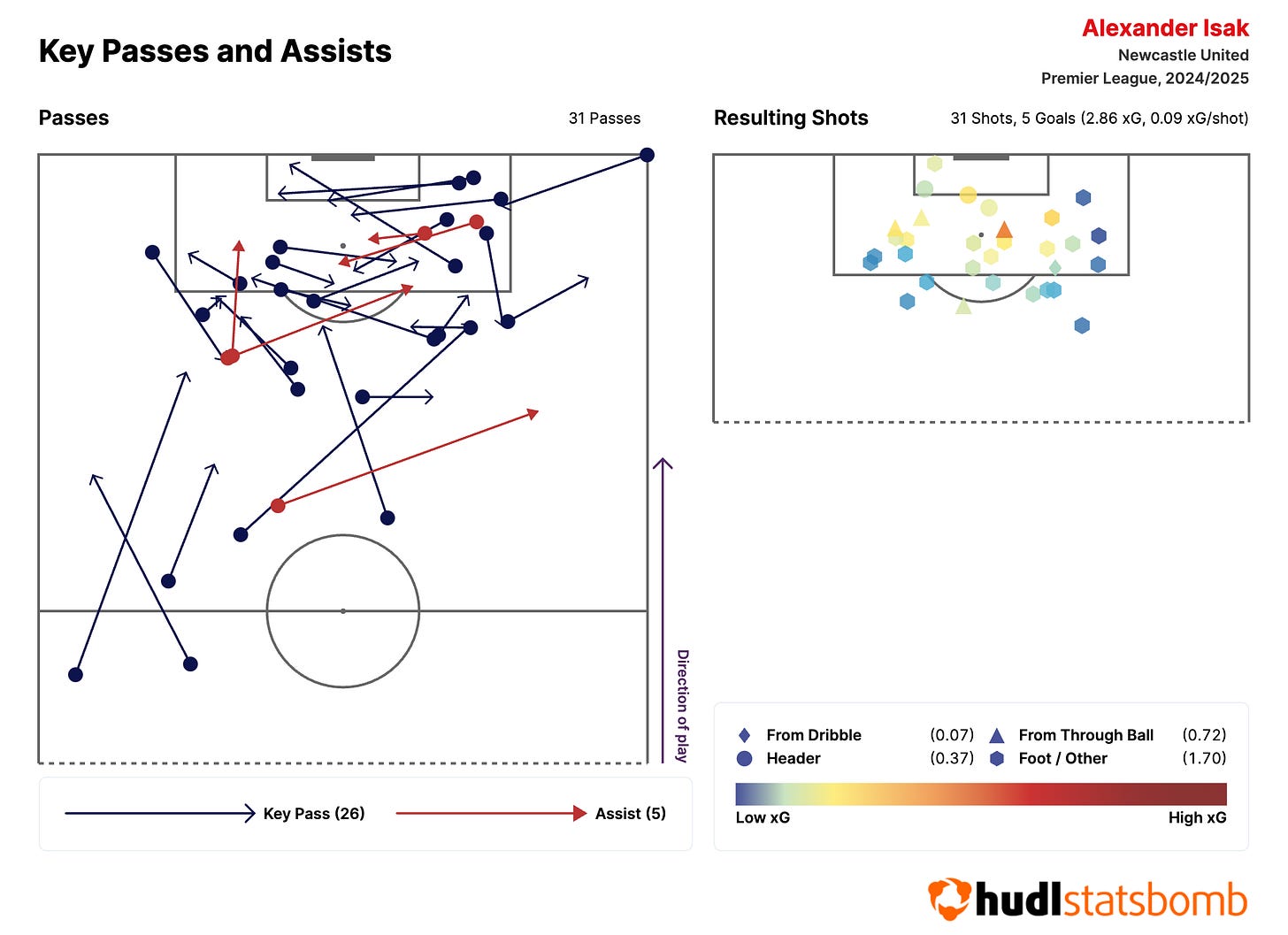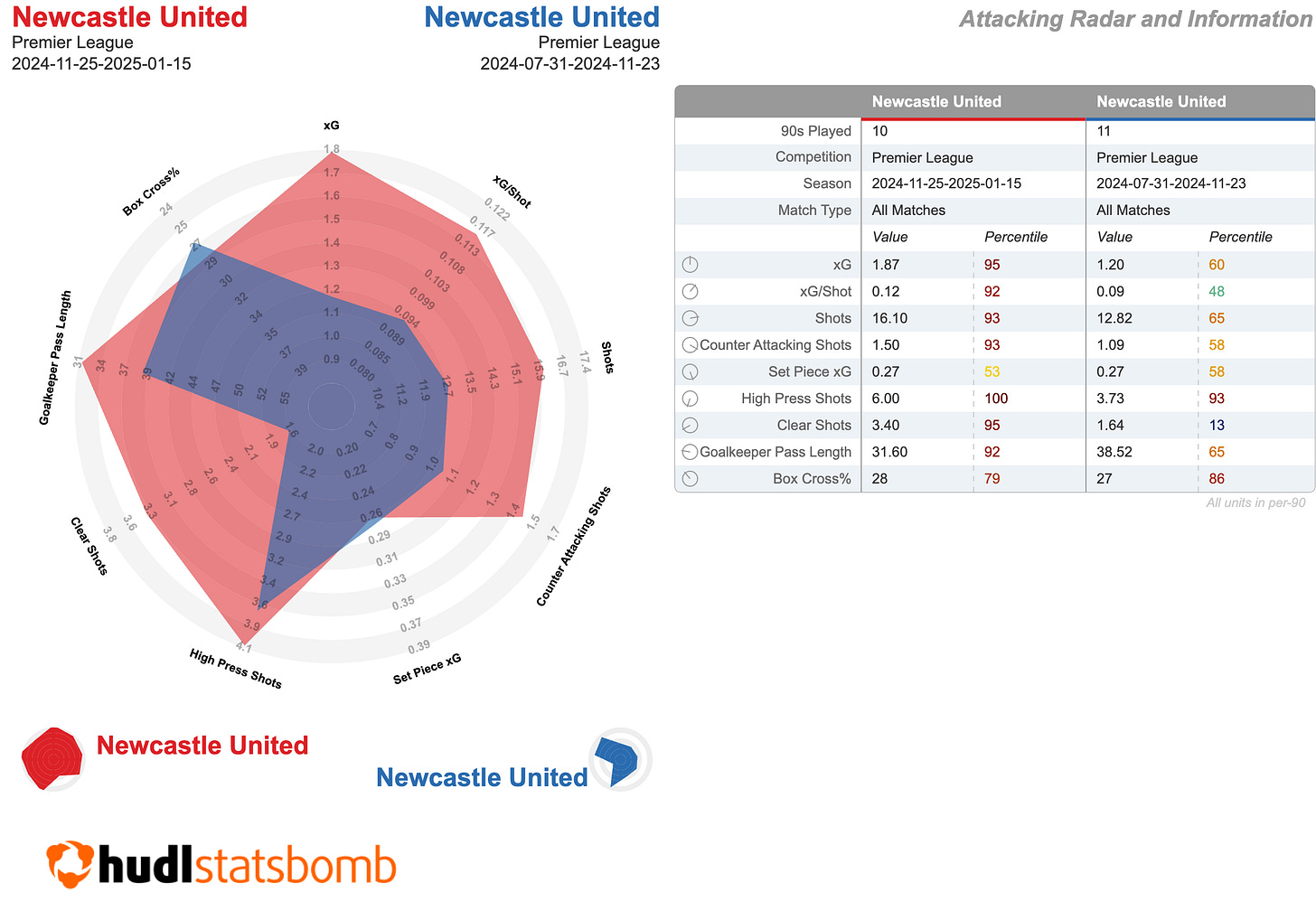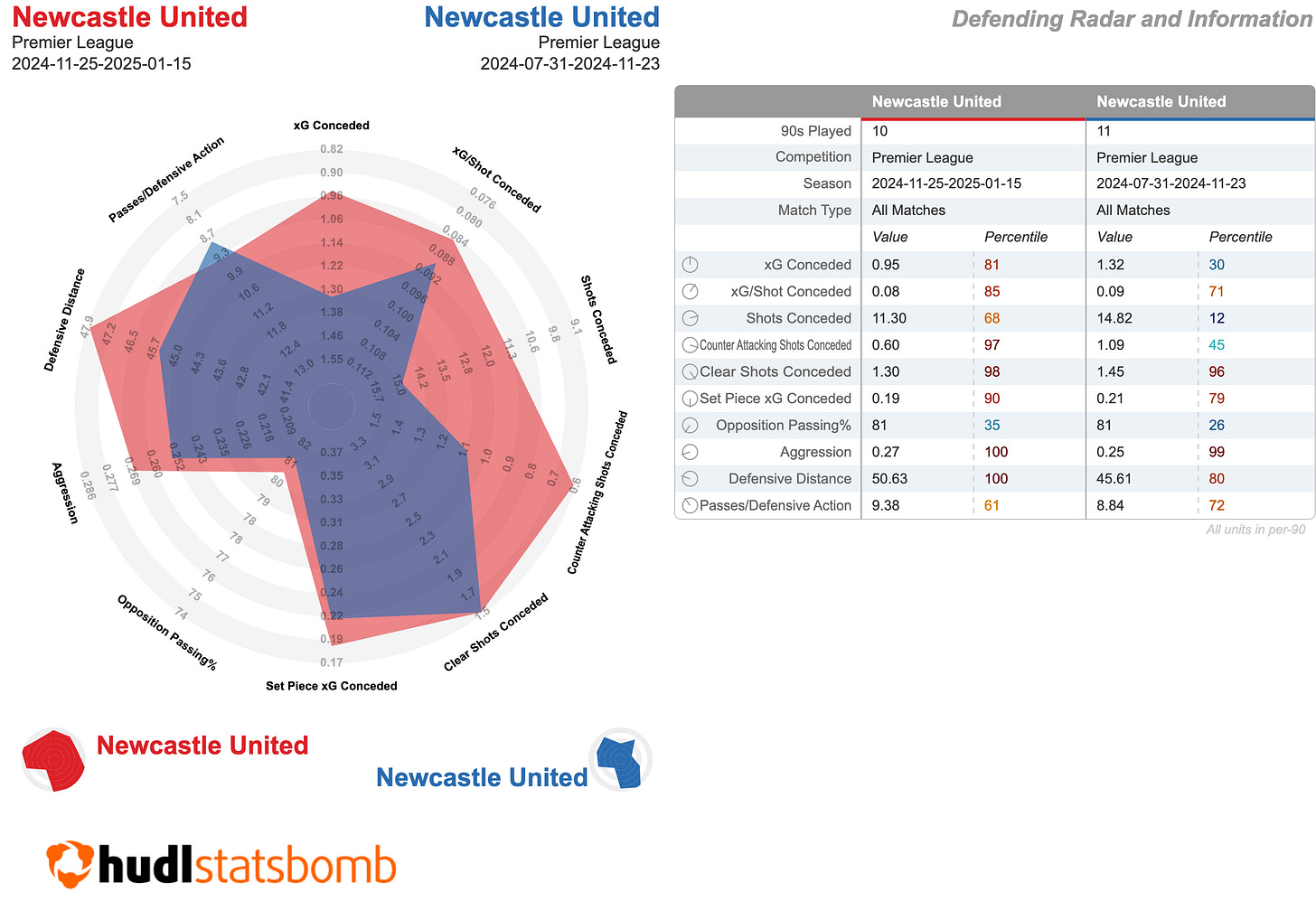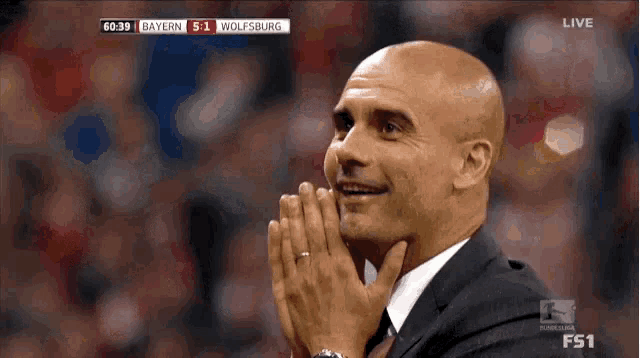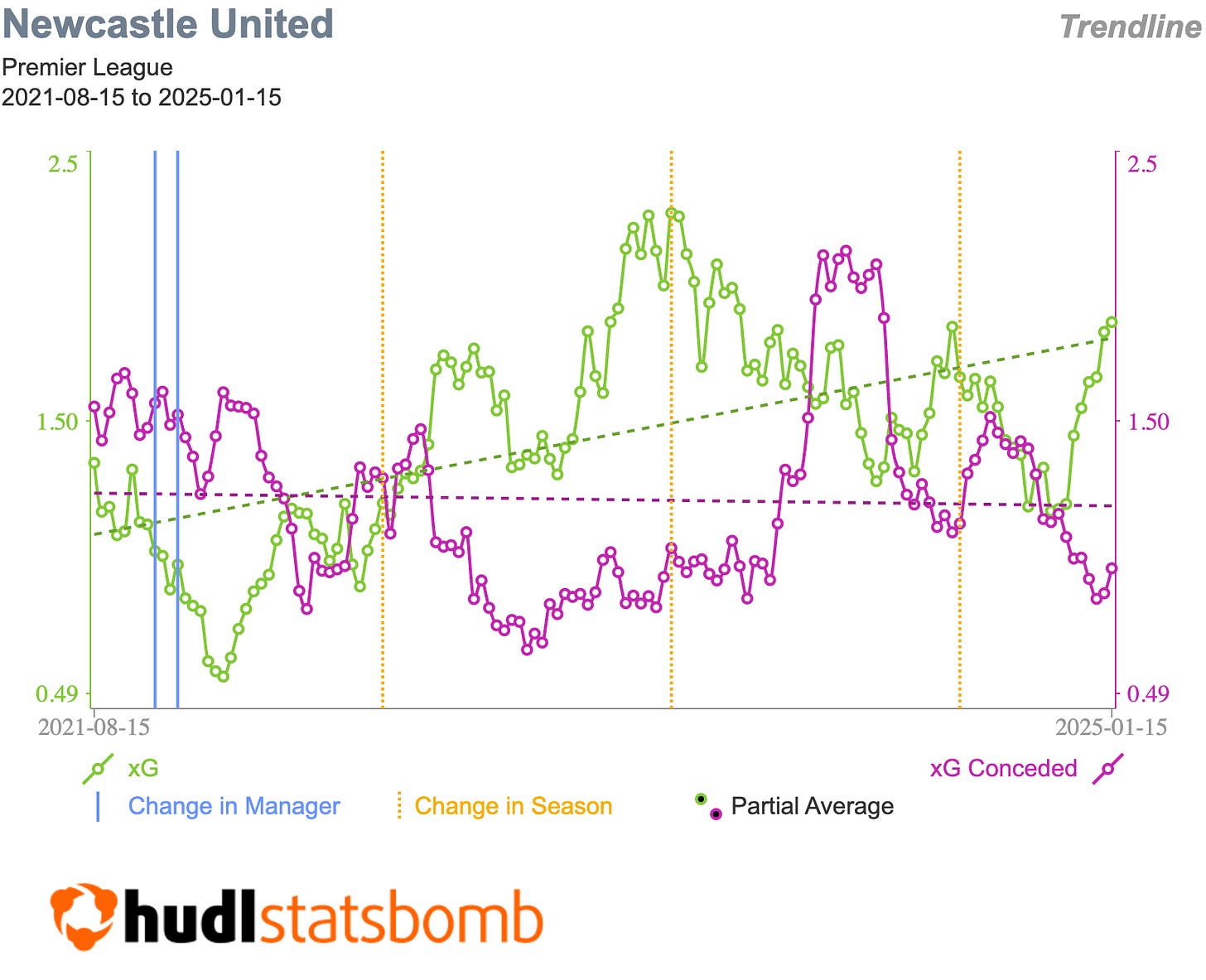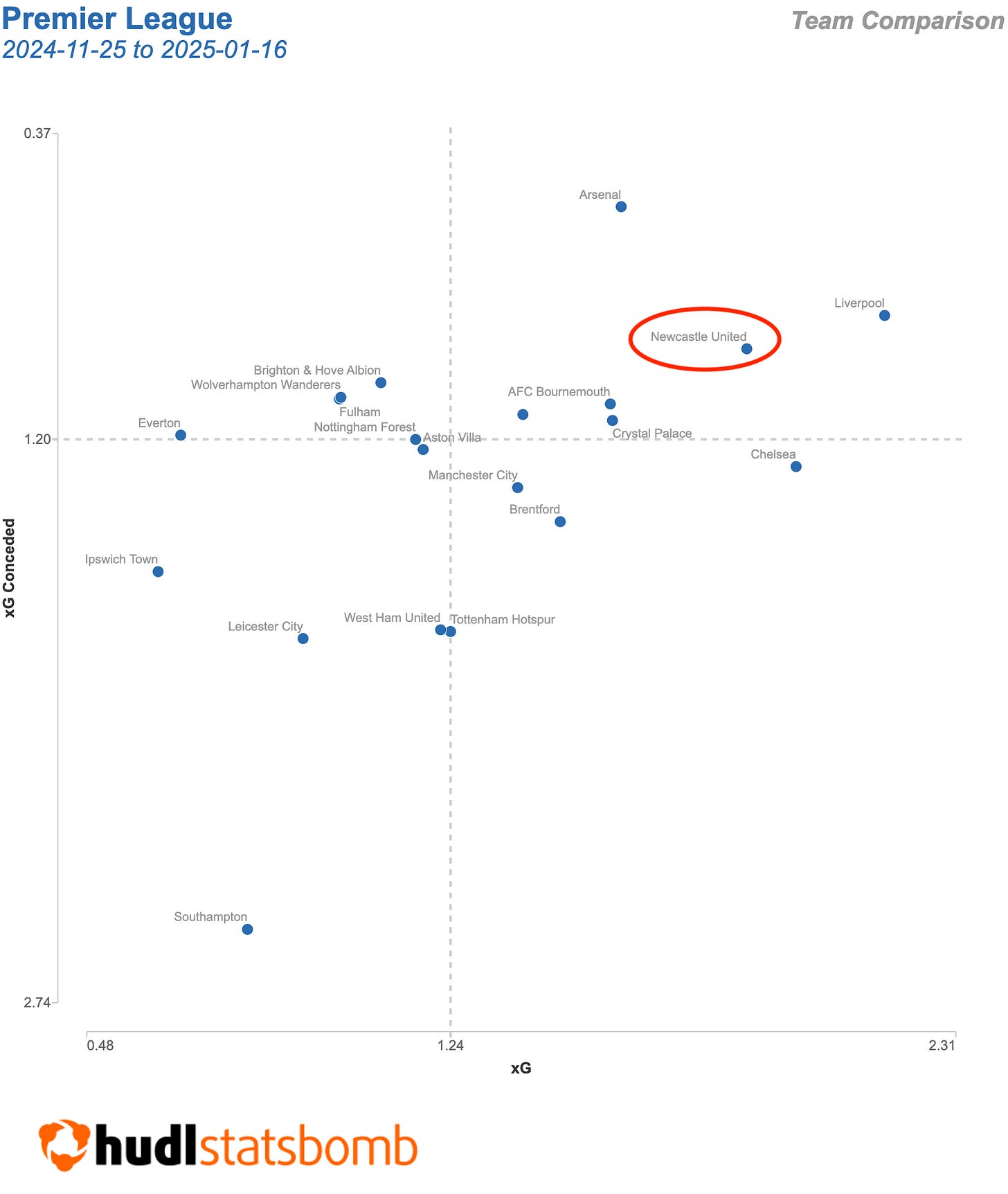How tactical tweaks have ignited Newcastle United's season.
A data-led look at why Newcastle United have gone from "Howe Out" to "Howe's Outstanding" in the space of 10 games.
It’s 5:30 am where I am. I have half a cup of coffee coursing through my system and am settling down to write a newsletter for the first time in a few months. Whereas I normally need the kick of caffeine to sharpen my senses right now the only fix I need is another ticket to Eddie Howe’s Newcastle United.
In my last newsletter – which you can read in full here – I broke down our start to the season in detail and broadly speaking highlighted the following:
Newcastle looked pedestrian in attack and had forwards searching for form
Howe was still trying to find a solution to the right side of the attack
Newcastle’s build-up play had evolved with fewer long goal kicks, with more play being going through Lewis Hall resulting in Newcastle United finally having a press-beating passer on the left side of the pitch
After a shaky start in the first five games, the defence showed signs of hitting a similar level to our UCL qualification season.
I also shared the following scatterplot in which Newcastle’s performance up until that point had been distinctly mid-table:
Leading to this little nugget:
While the defensive improvements seen across the last five games offer some optimism, sustaining these gains is crucial. Ideally, we’ll also boost our attack to move our fundamentals into the top-right quadrant, where results are a little more predictably positive.
Well, assuming that 99% of the people reading this are Newcastle United fans and already know how this phase pans out, let’s take a step-by-step look at the changes that have not only led to some predictably positive results and also pushed Newcastle United to a nine-game winning run.
Just put it in the net!
Let’s pick up the baton right after the 1-0 home win against Arsenal and Newcastle’s fantastic 3-1 win away at Forest.
Still trying to find a solution on the right side of the pitch, Howe moved Gordon to the right wing and re-introduced Joelinton and Willock taking turns to play left midfield and left wing as they did in 22/23.
Trailing 1-0 at the half, Howe shifted Gordon back to the left and moved Joelinton across to the right, to nearly instant results. After levelling from a smart Isak finish from a knockdown from Longstaff at a corner, Tonali came on for Willock and his running power helped set up two breakaway goals.
At the time, I felt like it was a turning point for the season. In the last 18 months, Newcastle have struggled to win away against in-form teams AFTER going behind. As the xG race chart below shows the win was entirely deserved and the international break came at the wrong time to sustain this momentum.
A winnable-looking home game vs. West Ham welcomed the players back from international duty. Thinking he had found the solution to unlock his attack, Howe set up with nearly the same side that ended the game Forest in the home game vs. West Ham. The only change was Lloyd Kelly making his first league start in place of Dan Burn.
After Isak’s classy finish from Hall’s through-ball was ruled out for offside in the opening minutes Newcastle conceded, this time due to Kelly losing Soucek from a corner. Despite generating 18 shots and two very high-value first-half chances for Gordon and Isak (though it was close to being offside), the yips in front of goal had resurfaced.
Though I maintain that West Ham would’ve probably crumbled had either player drawn us level, instead, we were suckered on the counter with Wan-Bissaka adding a second just after the break. Despite making attacking changes to get back into the game, Newcastle looked tepid and lost control in the middle of the park. At this point of the season, Howe’s search for the right combinations off the bench only made the attack meeker. It was back to the drawing board.
Howe implements his vision for Sandro Tonali & Bruno Guimaraes in the same midfield.
The next game away at Crystal Palace was the lowest ebb of the season for the team’s attacking play this season. In a tepid display, they recorded just one shot on goal and somehow managed to grab an underserved lead via an own goal. After riding their luck Newcastle’s resolve finally broke in the 94th minute as Munoz grabbed an equaliser with a header at the back post.
This game was more notable than a lucky point earned. It was the first time this season that Sandro Tonali lined up as the central player (or number six) with Guimaraes moving to the right of Newcastle's midfield three.
Following a year away from first-team football, Tonali had generally played in one of the more attacking midfield roles (referred to as a number eight) on either side of Guimaraes, with Howe gradually increasing his involvement – much to the annoyance of many Newcastle fans who were frustrated that Longstaff remained in the starting eleven.
At Palace, that dynamic changed and – despite a woeful attacking display – Howe committed to switching the men’s roles. The thinking behind the switch is clear as it simultaneously resolves two longstanding issues in the make-up of the Newcastle United midfield:
A poor ability to manage defensive transitions or counterattacks due to a lack of recovery pace at the six position
A lack of a technically gifted creative passer at either of the eight positions has made breaking down defences harder
He stuck with its benefits against Liverpool before finding out to his detriment how much value this adds vs. Brentford where he rested Toanli for Longstaff and switched Guimaraes back to six. Though even in that game Newcastle were on the wrong end of chasing a game they should’ve been winning.
1. Tonali vs. Guimaraes without the ball
The first of these points is fairly simple to visualise. Below you can see side-by-side heap map comparison of where Tonali and Guimaraes’ defensive actions (pressures, tackles, etc) take place when playing as a six.
Tonali’s greater ability to cover ground is clear. Whereas Guimaraes was limited to a fairly central column of activity within Newcastle’s defensive half. In retrospect, the swap is so obvious that it was probably Howe’s plan all along, but it does come with a tradeoff.
2. Tonali vs. Guimaraes with the ball
When it comes to Tonali’s use of the ball, you may have seen some analysts on social media suggest that Tonali would be ill-suited to six role. Generally, this is because, in his career at Milan, Tonali’s 🔴 data markers did not show an ability to pass as accurately under pressure nor offer a large volume of progressive passes into the final third of the pitch when compared to the league average 🔵, which were key qualities Guimaraes bought to the role.
While these concerns are legitimate if you were to drop Tonali’s combination style – which often involves multiple first-time passes back to the centre-back, full-back or midfield partner – into the same Newcastle United team that Guimaraes helped to transform, the supporting cast around the position has changed.
Although Guimaraes had help on the right-hand side of the pitch in the ball-playing abilities of Trippier and Schar, whenever he had the ball on the left teams would aggressively press in an attempt to force the ball to Burn or Pope in the hope of a turnover.
The emergence of Hall as a press-resistant and progressive passer down the left helps to nerf that ploy, while Guimaraes himself is also available to drop in beside and swap roles with Tonali to move the ball around opposition players.
In the recent cup win away at Arsenal without Guimaraes (a milestone of its own kind) Tonali’s passing success in the role dropped from 87% to 75%. While it is obviously a tough away fixture and a drop is somewhat expected, it indicates that Tonali’s collaborative style works most efficiently when the right players are around him. It’d be interesting to see how he copes against Bournemouth this coming weekend, as relentless pressers of the man in possession, the fixture is a great litmus test.
Here are some heat maps that show the stylistic difference in more detail. On the left of the image, you can see where Tonali receives the ball when playing as a number six. On the right, you can see the end locations of his passes.
Note how there is a heavy concentration of receipts at the bottom edge of the centre circle but more passes are played to his right (to Guimaraes/Schar) or left (Hall) rather than penetrating through the middle of the pitch.
Now compare these with how Guimaraes approaches the role. While his ball receipts are more concentrated, his passes are also more penetrative in valuable central areas of the pitch.
The switch to this new role 🔴 has allowed Guimaraes to apply this same ability in more impactful areas of the pitch for Newcastle and has increased the value added by his line-breaking passes (LBP OBV) and a dramatic increase in the volume of chances he’s creating for his teammates (Open Play xG Assisted).
And in just under 10 games since the swap, Guimaraes has created 22 shots, including 10 chances for Isak.
Murphy & Gordon get their groove back
While the Tonali and Guimaraes switch has fundamentally changed the play in both directions, the reintroduction of Jacob Murphy has also been pivotal to the recent upswing in Newcastle United’s form.
While early in the season Murphy’s inability to replace his performances from 23/24 forced Howe to compromise the performance of players like Gordon, Joelinton and Barnes to find a solution that would fix his spluttering attack, it seems the spell out of the team did him some good.
Below you can see Murphy how much he has improved 🔴 since his reintroduction vs. the opening weeks of the season 🔵
Since returning to the team, he’s more than doubled his expected goals (xG) from 0.06xG from just over one shot per 90 to 0.29xG from two and a half shots per 90. With similar levels of improvement in the quality of chances he’s created for teammates raising his open play xG assisted from 0.20 to 0.46 per 90 helping him climb to three goals and six assists in just 13.3 minutes worth of games. Not bad for a “squad player”.
Combined this improvement in his form has brought him largely back in line 🔴 with what we saw from Murph last season 🔵
Gordon & Isak hit top form
The beneficiaries of Murphy’s and Guimaraes’ creativity have been Anthony Gordon and Alexander Isak.
After joining the group late after the Euros, then being moved around to plug gaps in the team while Isak was injured and being used as a temp solution on the right wing, Gordon hadn’t hit his stride.
In my last newsletter, I mentioned he had to juice his shot volume from his early season form 🔵 and with a return to his favoured spot on the left and a better supply of quality chances he’s now taking three plus shots per 90 🔴
And looks on track to repeat his double-double (10 goals, 10 assists) from the 23/24 season. Getting him tied down to that new contract didn’t hurt matters either but right now every other team vying for the top six positions in the table would take him in a heartbeat.
Which finally brings me to Alexander the Great. There’s honestly not a heap more to say about Isak that hasn’t already been written by others, but I’m going to give it a shot.
I didn’t necessarily think it was possible, but despite Newcastle’s iffy attacking form until November Isak is on track to better his breakout 23/24 season in style.
In doing so he’s scored his 50th goal for Newcastle and became only the fourth player in Premier League history to score in eight consecutive games.
Having scored 15 goals so far this season he’s finishing well ahead of his total of 10.68 xG. However, this for his third season in a row he’s outpacing his expected numbers putting him into the bucket of above-average finishers who are irreplaceable.
What’s particularly impressive is how often Howe’s men can get him into open space via through balls, he’s so good that when he does miss one of the triangle-shaped shots we think it’s a bad miss rather than him just being human.
Isak is also just flat-out creating more chances for teammates this season, improving his xG Assisted to 0.15 per 90 from open play rewarding him with five assists at just beyond the halfway point of the season. Previously at Newcastle and Sociedad, this number has flitted between 2-3 assists for an entire season, be interesting to see if this is just a purple patch or if the decision-making/execution of his final pass remains as good.
Overall team performance
So let’s do a comparison of Newcastle’s performance data radars for the first 11 league games 🔵 vs. the next ten 🔴 to see how much they’ve improved.
Attack
Defence
It’s the sort of upturn in performance and form that leaves you feeling like…
Even if some of the markers of defensive play looked good, the attack was so anaemic that anyone that lost a little faith that Howe could turn things around can be forgiven. It should also serve as a reminder of just how good he is at finding solutions to problems and turning things around.
Some commentators will point to our recent strength of schedule. While there is an element of playing teams at the right time (Spurs/Man Utd), benefiting from red cards (Villa), or facing weaker sides (Ipswich/Leicester), we also have yardstick performances against Liverpool at home and Arsenal away in the cup.
Anyway, to finish remember the scatterplot at the start of this article? I wouldn’t blame you if you didn’t, it’s taken me quite long enough to write let alone for you to have read (my current time is 12:28 pm a whole day later) but here’s how Newcastle are shaping up vs. the rest of the league since the 2-0 home defeat to West Ham.
Fingers crossed that all the bad luck we had with injuries last season evens itself out—because a spell without Isak would be tricky to manage. But with five Champions League spots likely up for grabs via the league and a clear route to another final at Wembley mapped out, this season has the potential to be very special indeed.
HWTL

